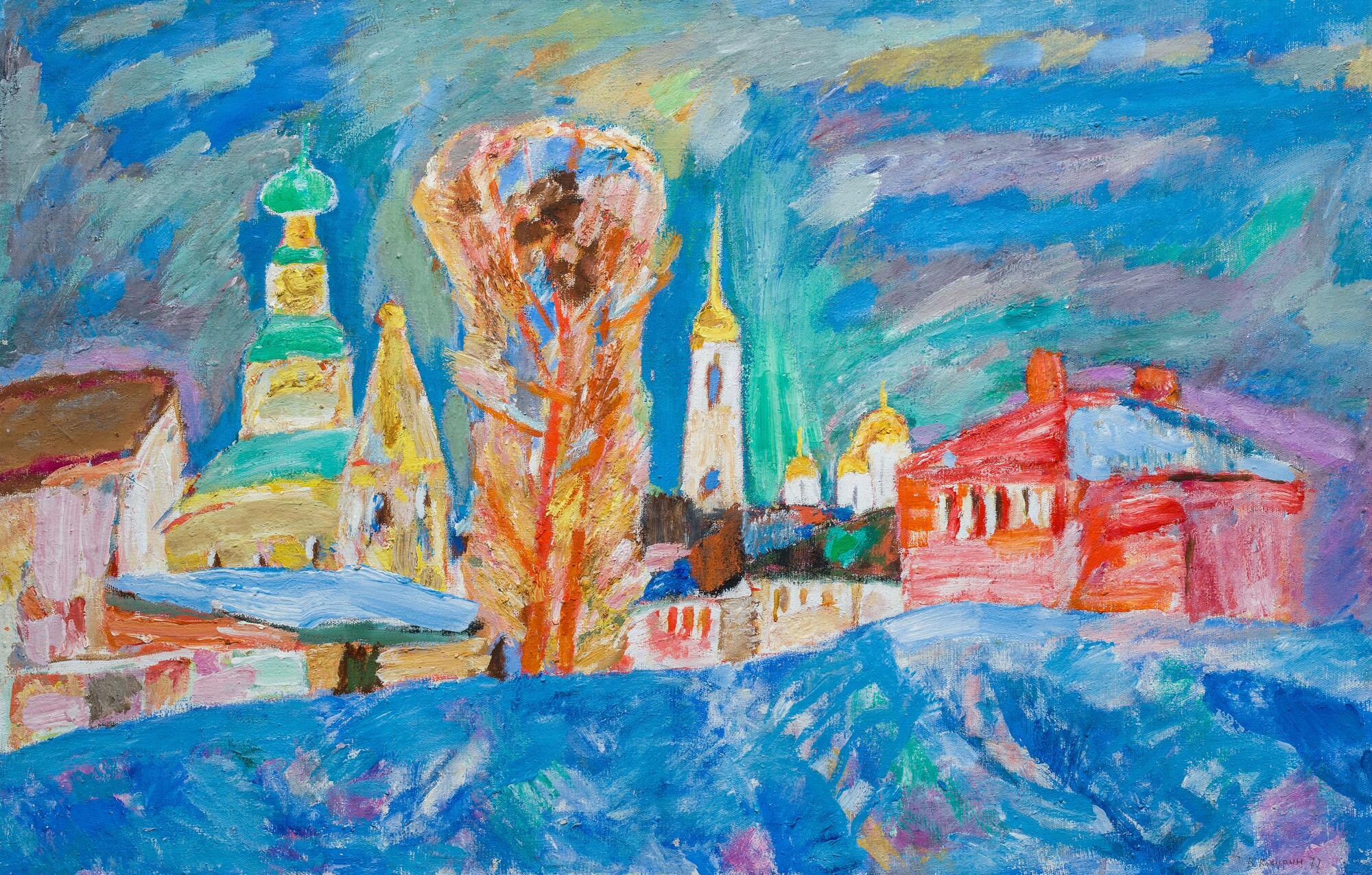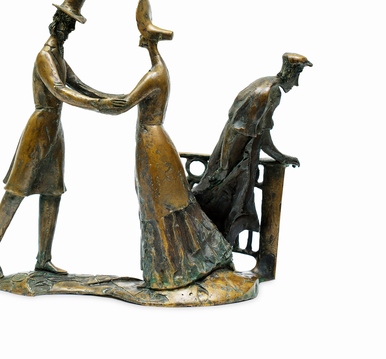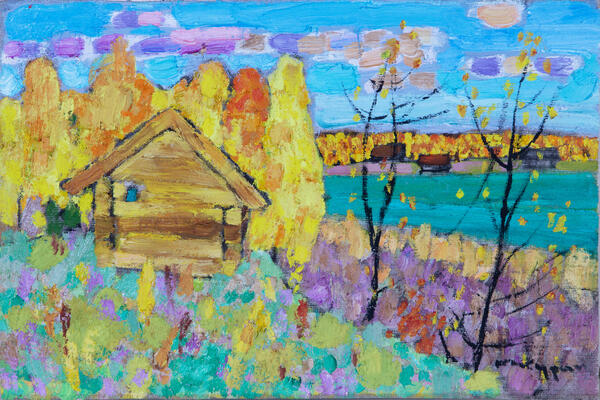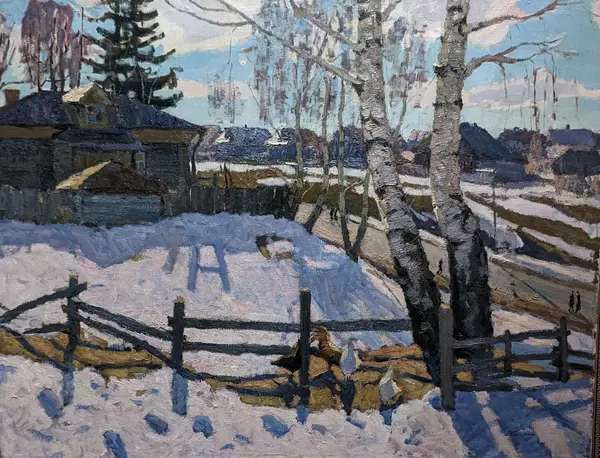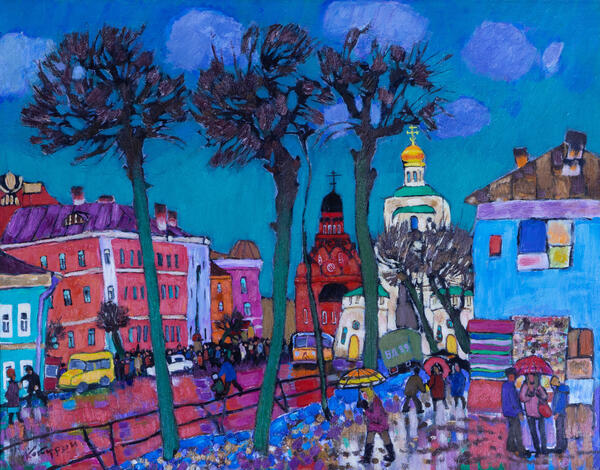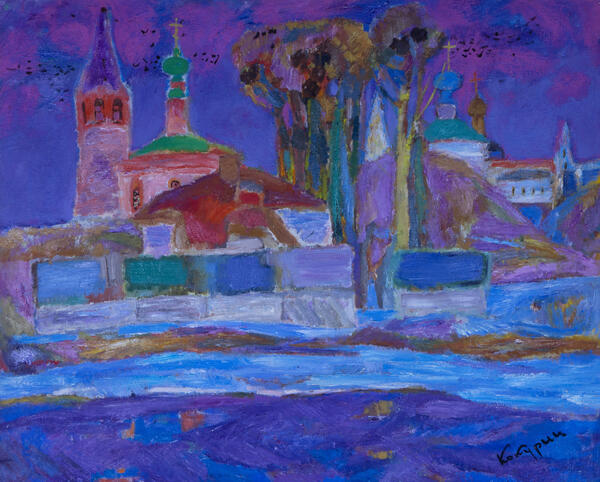Valery Grigorievich Kokurin was born in 1930 in Vladimir. He studied at a local art studio under Professor Nikolay Petrovich Sychyov. At the age of 24, Kokurin began working in scientific workshops, specializing in restoration, under the supervision of the architect and restorer Alexander Vasilyevich Stoletov.
Valery Kokurin was interested in a variety of genres, including landscape, portrait, and still life. His works amaze even the most sophisticated viewer with the richness and vibrancy of color palettes. In 1960, the works of Valery Kokurin and other Vladimir artists were displayed in Moscow at the exhibition “Soviet Russia”. As they deviated in their art from the style that was officially recognized in the USSR in the 1950s, Soviet critics coined the terms “Vladimir school of landscape painting” and “Vladimir Impressionists”.
Valery Kokurin, together with Vladimir Yakovlevich Yukin and Kim Nikolaevich Britov, are considered the founders of a new phenomenon in Russian art. Their paintings of those years followed the color rules used in icon painting, embroidery traditions characteristic of church-related utensils, and decorative principles of white stone carving of ancient Vladimir cathedrals.
An original distinguishing feature of this group was the use of uncommonly bright shades. Valery Kokurin had his own interpretation of the pictorial principles of the Vladimir school. The peculiarity of this artist’s style is the increased decorative nature and refined color schemes that he discovered.
Although his painting is based on folklore, it is imbued with the aesthetics of Impressionism, European art, and finally, it is especially sensual and emotional. Kokurin’s artworks made the Vladimir school more spiritual and gave it a special style, lightness and sophistication.
The painter made many creative trips around the country, but throughout his life his hometown and the Vladimir region were his main sources of inspiration. He was one of those artists who always paid much attention to this theme.
The painting “Old Vladimir” shows how an ordinary
landscape can be depicted in an unusually colorful way. The artist used broad,
temperamental and vibrant brushstrokes. The polyphony of color, the image of
the unique nature and architecture of Vladimir, its streets and monuments of
wooden architecture, which can be seen in this work, were characteristic
features of the artist’s style.
